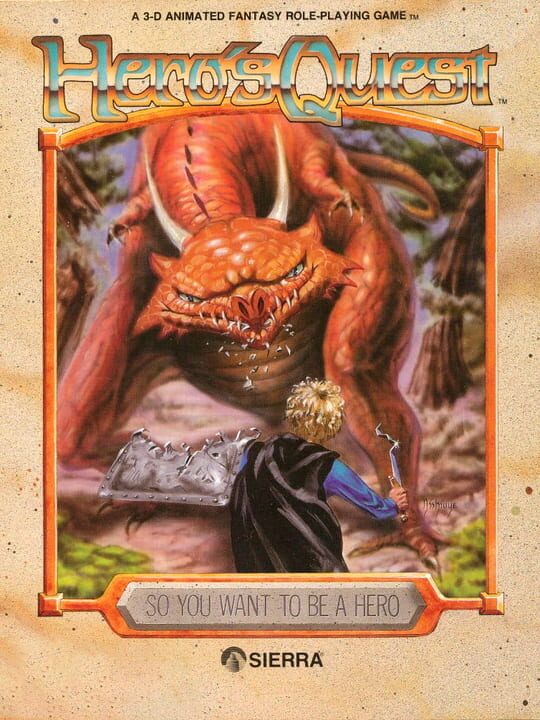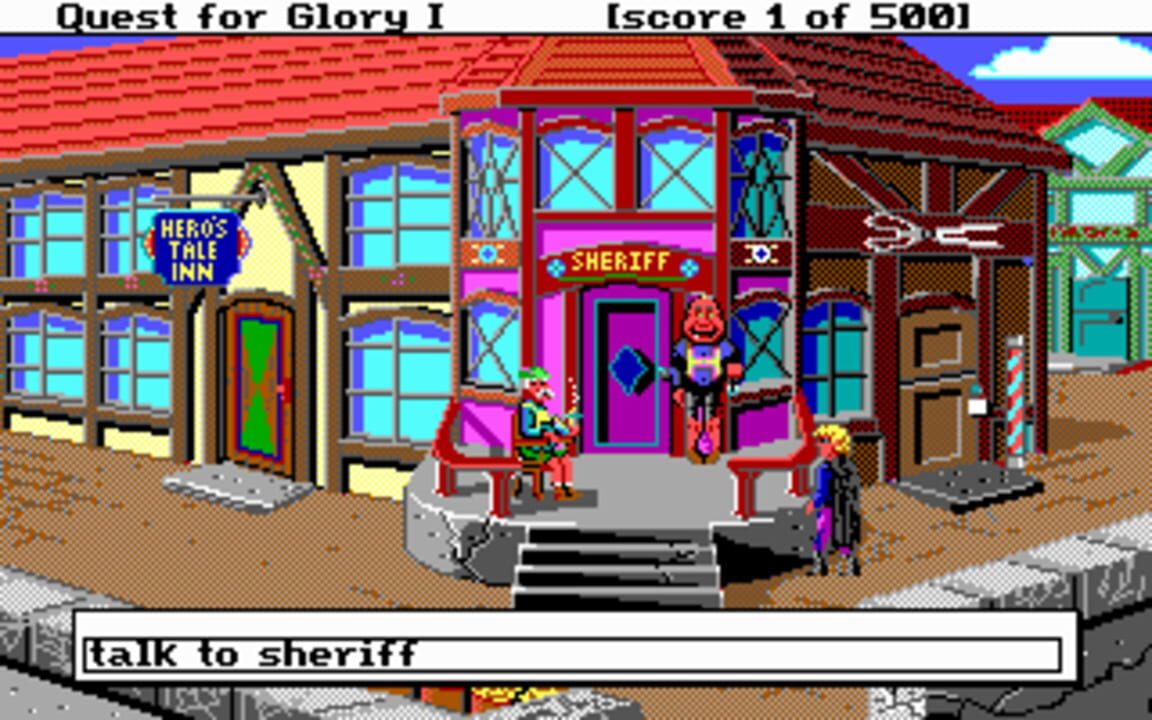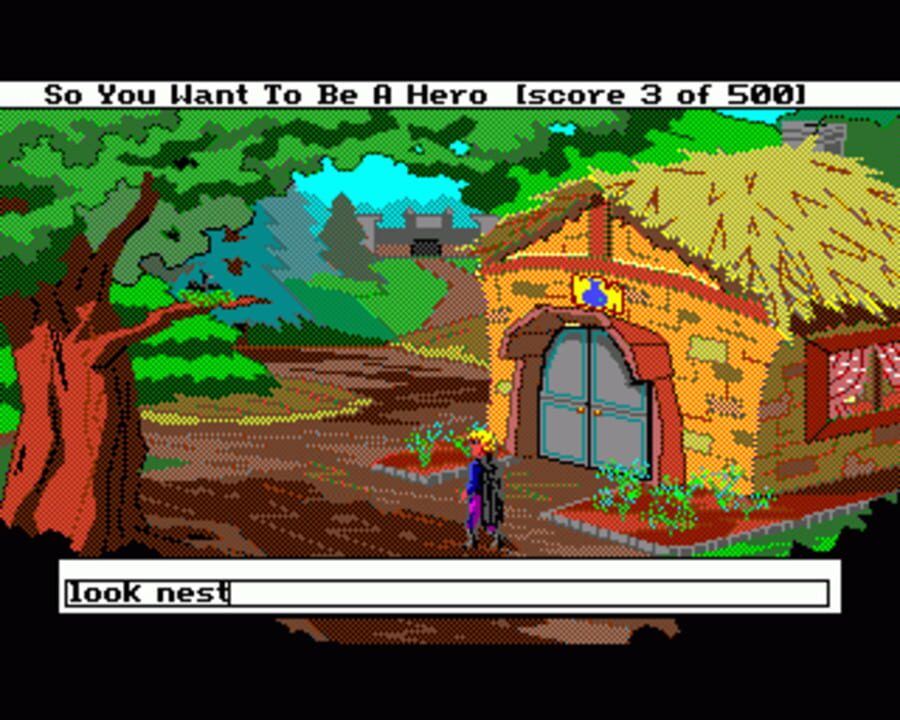Hero's Quest: So You Want to Be a Hero

Game Information
Original Release Date: October 01, 1989
Platforms: Amiga, Atari ST/STE, DOS
Involved Companies: Sierra On-Line
Genres: Role-playing (RPG), Adventure
Summary: The little town of Spielburg is populated mostly by beer-drinking humans and some centaurs who like working in the field. Spielburg is surrounded by forests and mountains, where all kinds of weird creatures dwell: ogres, goblins, talking foxes, stupid magicians, and others. Lately, Spielburg has been assaulted by brigands; besides, the witch Baba Yaga is not to be trusted. The town has everything it needs--even a Thieves Guild--except a strong, brave hero who would protect it. So when a wandering adventurer enters the town, he quickly realizes that his skills might be of use. Hero's Quest: So You Want to Be a Hero is a hybrid game that contains Role-Playing and Adventure elements. It is visually very similar to other Quest titles by Sierra (such as for example Space Quest), but the gameplay--besides the usual exploration, conversations with characters, and the solving an occasional puzzle with the help of inventory items--also involves combat and character development. In the beginning of the game, the player chooses a character class for the protagonist--either a Fighter, a Mage, or a Thief. The choice of class will influence not only the combat, but also many other events in the game. Puzzles might have different solutions depending on the class and the amount of ability points in various categories. The main character's skills and abilities are raised directly by repeatedly performing appropriate actions, e.g. fighting enemies, practicing, climbing, throwing objects, etc. Many of those activities are necessary to perform in order to successfully complete the game. Combat takes the player to a separate screen (represented by the enemy's picture) and involves timed selection of commands such as Attack, Parry, etc. The interaction with the game-world is performed by typing verb commands or conversation topics. The game features a day/night cycle, which also includes character schedules. The main character can get hungry and tired, so feeding him and getting some rest is essential.



